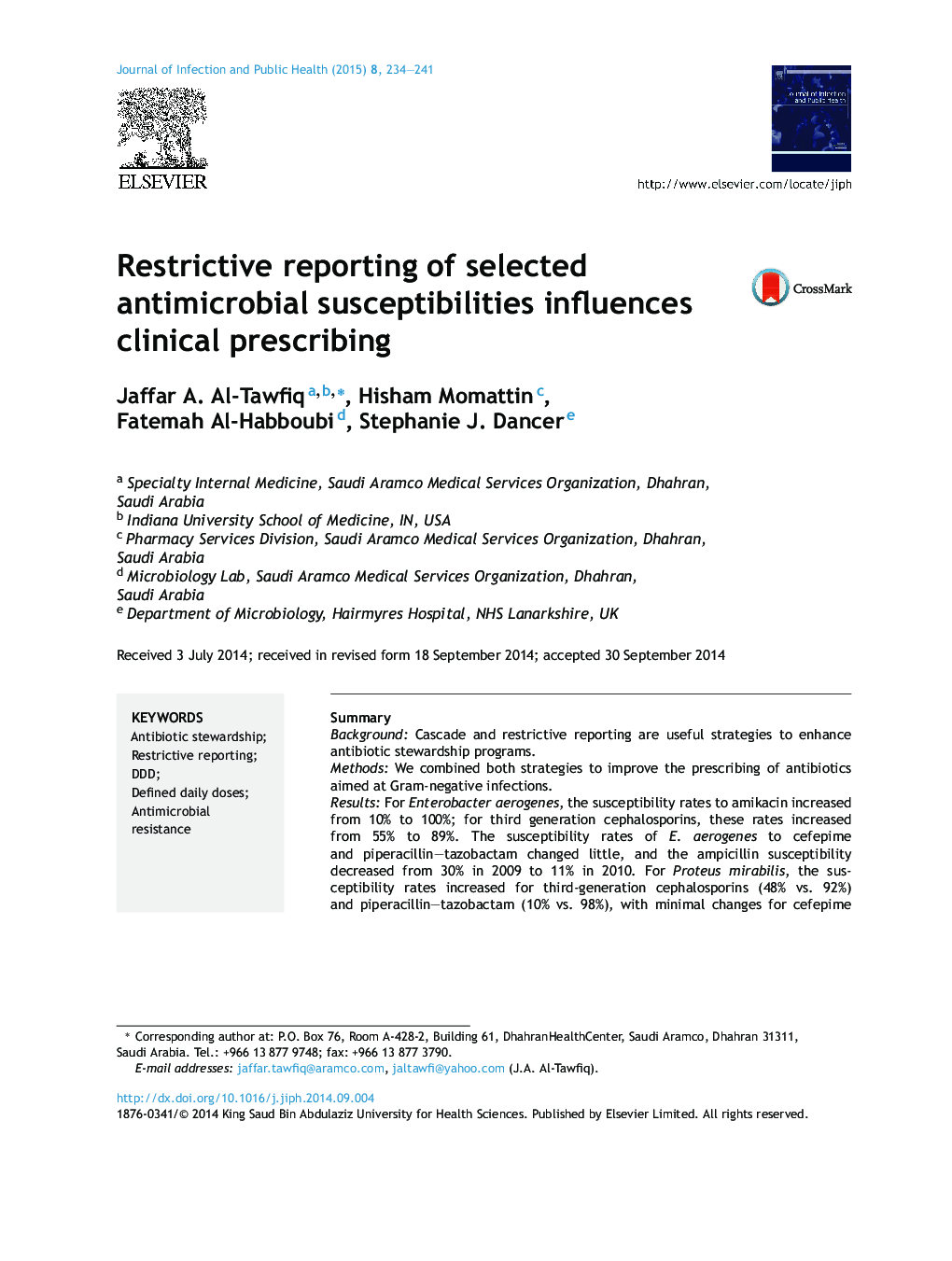| کد مقاله | کد نشریه | سال انتشار | مقاله انگلیسی | نسخه تمام متن |
|---|---|---|---|---|
| 3405977 | 1223493 | 2015 | 8 صفحه PDF | دانلود رایگان |
SummaryBackgroundCascade and restrictive reporting are useful strategies to enhance antibiotic stewardship programs.MethodsWe combined both strategies to improve the prescribing of antibiotics aimed at Gram-negative infections.ResultsFor Enterobacter aerogenes, the susceptibility rates to amikacin increased from 10% to 100%; for third generation cephalosporins, these rates increased from 55% to 89%. The susceptibility rates of E. aerogenes to cefepime and piperacillin–tazobactam changed little, and the ampicillin susceptibility decreased from 30% in 2009 to 11% in 2010. For Proteus mirabilis, the susceptibility rates increased for third-generation cephalosporins (48% vs. 92%) and piperacillin–tazobactam (10% vs. 98%), with minimal changes for cefepime (96% vs. 93%), ampicillin (69% vs. 73%) and amikacin (96% vs. 84%). For Pseudomonas aeruginosa, the susceptibility rates improved slightly for third-generation cephalosporins (81% vs. 91%) but reduced for piperacillin–tazobactam (99% vs. 59%). Hospital-acquired Clostridium difficile infections decreased from 0.11 to 0.07 per 1000 patient days.ConclusionsSelective reporting helps physicians choose the most appropriate antibiotics for their patients within a stewardship program, with reduced C. difficile infection.
Journal: Journal of Infection and Public Health - Volume 8, Issue 3, May–June 2015, Pages 234–241
